Abstract
Of various antimalarial compounds tested, only proguanil failed to inhibit yeast hexokinase. The metabolite of proguanil, 10,580, was an effective inhibitor. Some compounds tested which were without antimalarial activity were potent inhibitors of yeast hexokinase. The degree of inhibition increased as the time during which the enzyme had been in contact with the drug increased, and the inhibitory action of mepacrine was reduced when the concentration of ATP was raised. The inhibition of yeast hexokinase by 10,732 was independent of the concentration of ATP.
The hexokinase of haemolysates of the reticulocytes of mouse or rat blood was not appreciably higher than that of similar haemolysates of normal erythrocytes. Preparations of mouse or rat erythrocytes parasitized with P. berghei possessed a much higher hexokinase activity.
The inhibiting action of various compounds on the hexokinase of P. berghei closely resembled those with yeast hexokinase. Again all antimalarial compounds (apart from proguanil) inhibited the enzyme, but some of the most potent inhibitors were devoid of antimalarial action. Amongst the chemotherapeutically active compounds, there appeared to be an approximate parallelism between antimalarial activity and potency as inhibitors of plasmodial hexokinase. The action of mepacrine on plasmodial hexokinase was reduced by raising the concentration of ATP, but, as with yeast hexokinase, the inhibition by 10,732 was independent of the ATP concentration.
From a consideration of the results, it seems doubtful whether this type of inhibitory effect plays more than a minor part in the mechanism of antimalarial action in vivo.
Full text
PDF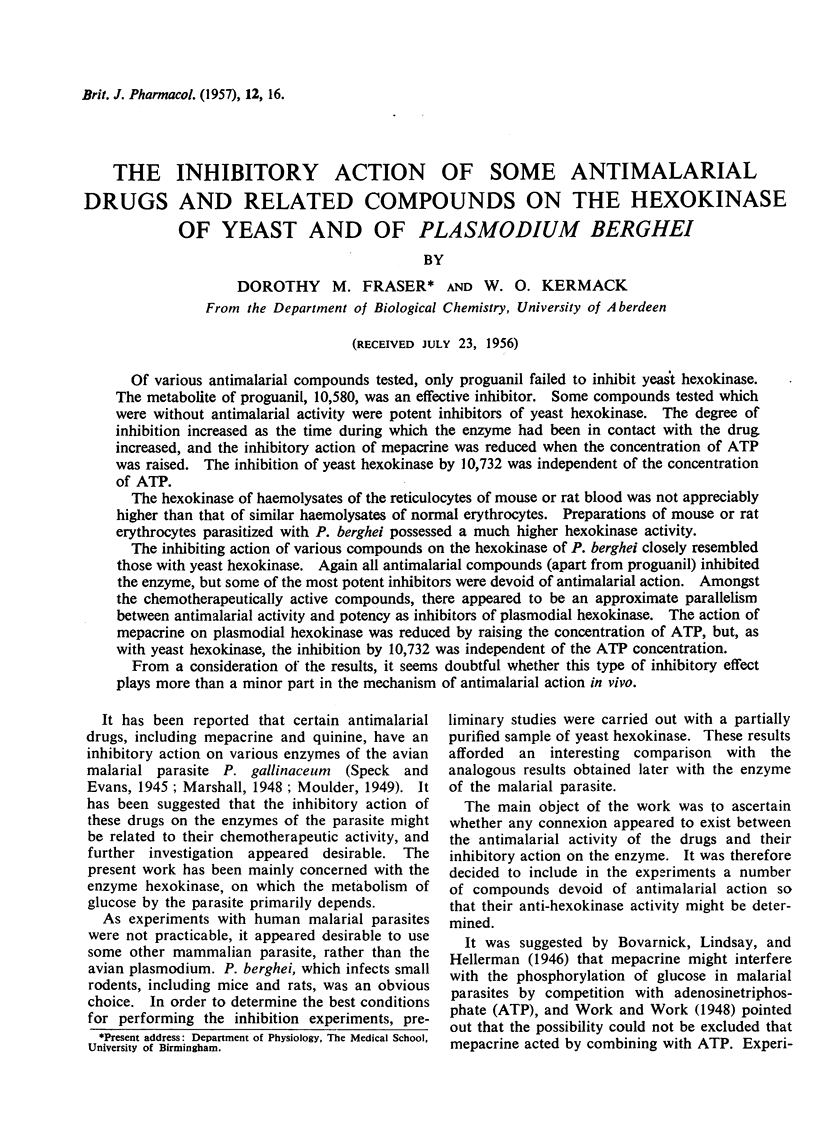
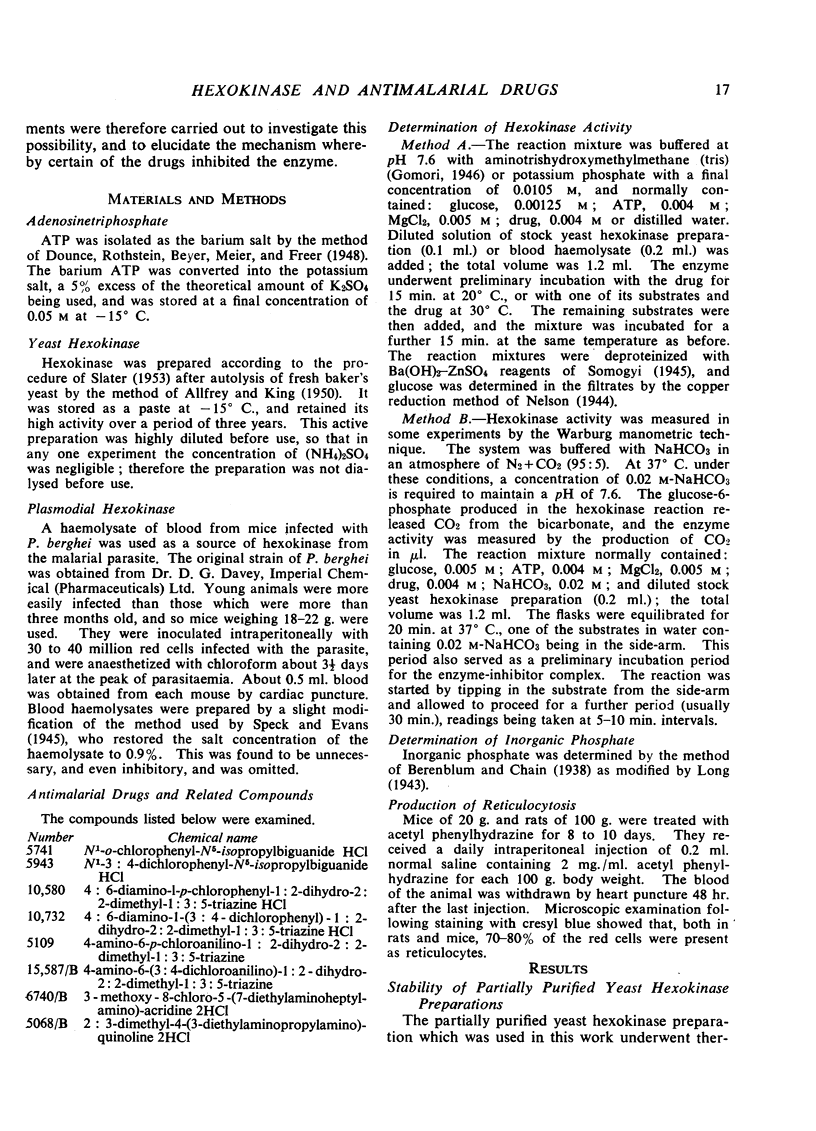
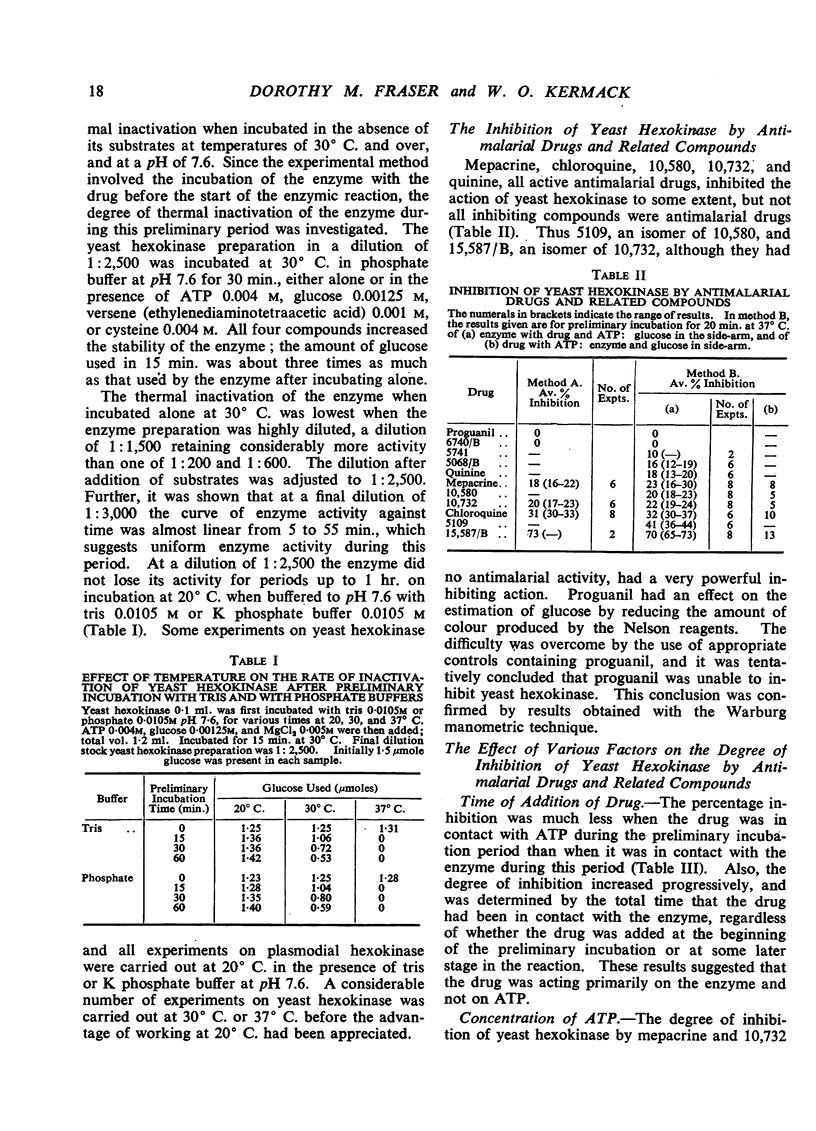

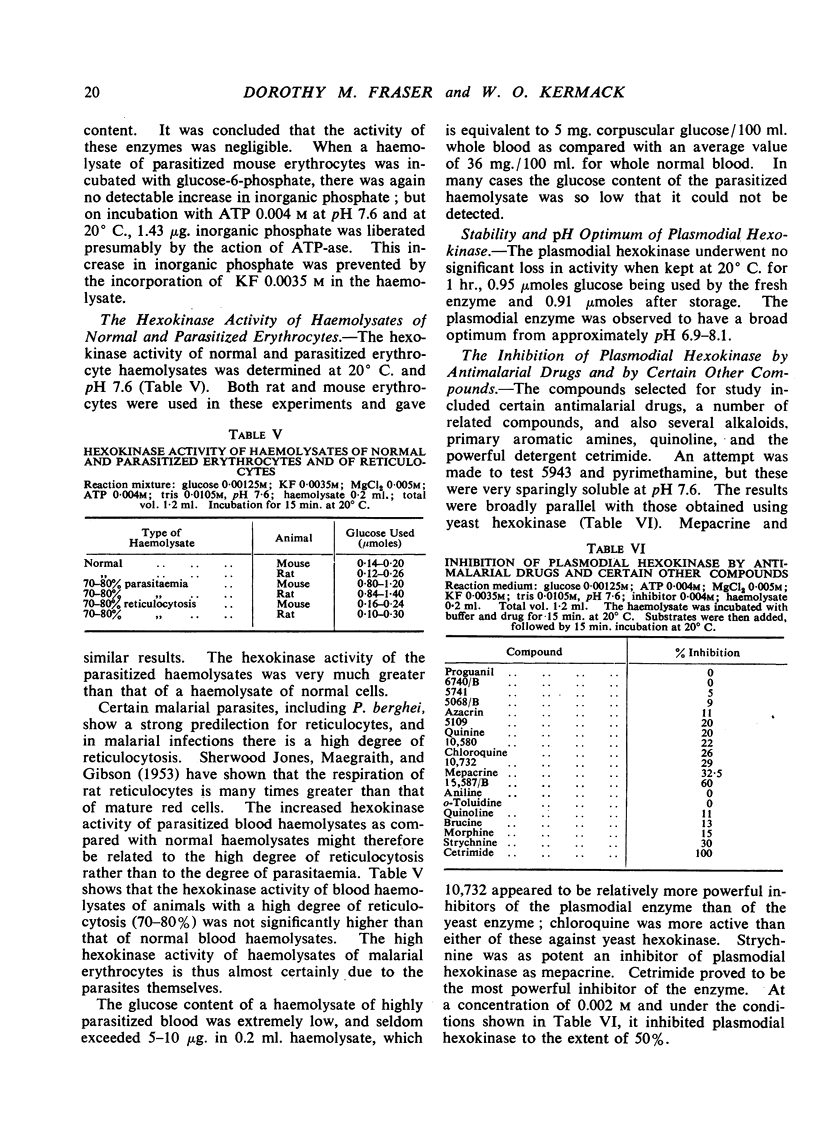

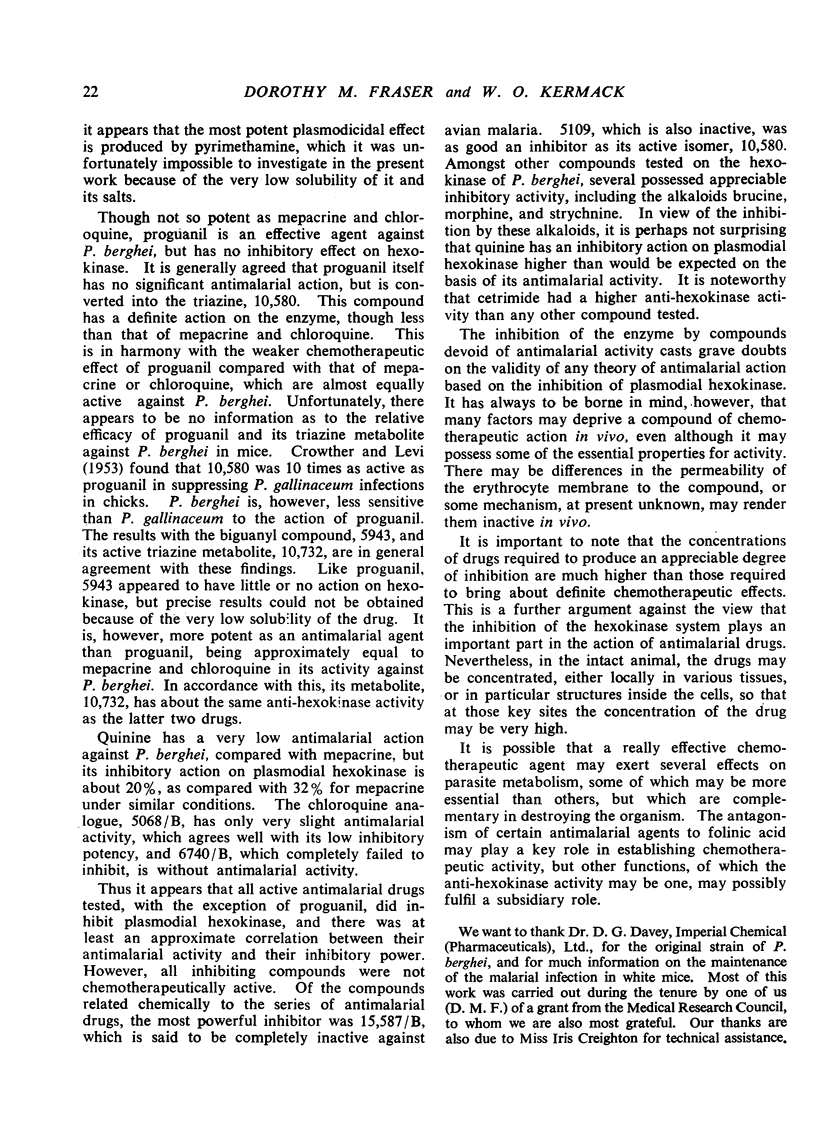
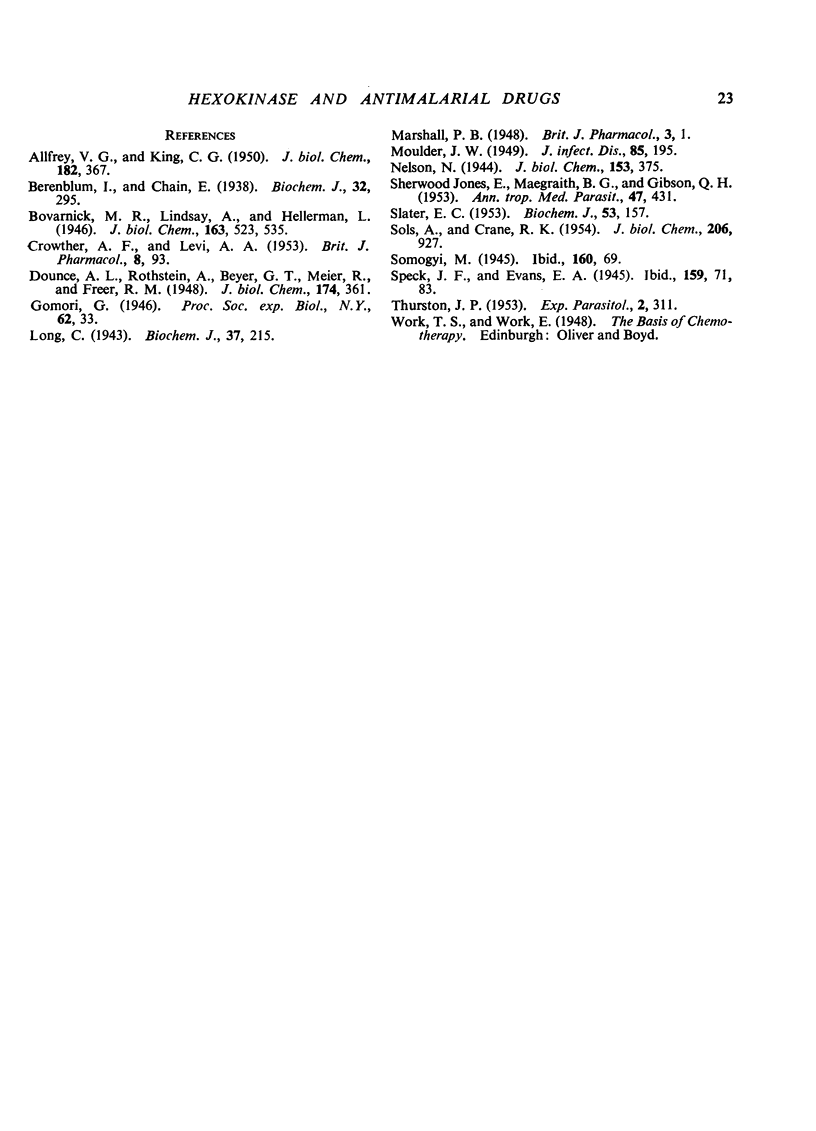
Selected References
These references are in PubMed. This may not be the complete list of references from this article.
- Berenblum I., Chain E. An improved method for the colorimetric determination of phosphate. Biochem J. 1938 Feb;32(2):295–298. doi: 10.1042/bj0320295. [DOI] [PMC free article] [PubMed] [Google Scholar]
- CROWTHER A. F., LEVI A. A. Proguanil, the isolation of a metabolite with high antimalarial activity. Br J Pharmacol Chemother. 1953 Mar;8(1):93–97. doi: 10.1111/j.1476-5381.1953.tb00758.x. [DOI] [PMC free article] [PubMed] [Google Scholar]
- JONES E. S., MAEGRAITH B. G., GIBSON Q. H. Pathological processes in disease. IV. Oxidations in the rat reticulocyte, a host cell of Plasmodium berghei. Ann Trop Med Parasitol. 1953 Dec;47(4):431–437. [PubMed] [Google Scholar]
- Long C. The in vitro oxidation of pyruvic and alpha-ketobutyric acids by ground preparations of pigeon brain. The effect of inorganic phosphate and adenine nucleotide. Biochem J. 1943 Jul;37(2):215–225. doi: 10.1042/bj0370215. [DOI] [PMC free article] [PubMed] [Google Scholar]
- SLATER E. C. Spectrophotometric determination of fructose-1:6-diphosphate, hexosemonophosphates, adenosinetriphosphate and adenosinediphosphate. Biochem J. 1953 Jan;53(1):157–167. doi: 10.1042/bj0530157. [DOI] [PMC free article] [PubMed] [Google Scholar]


